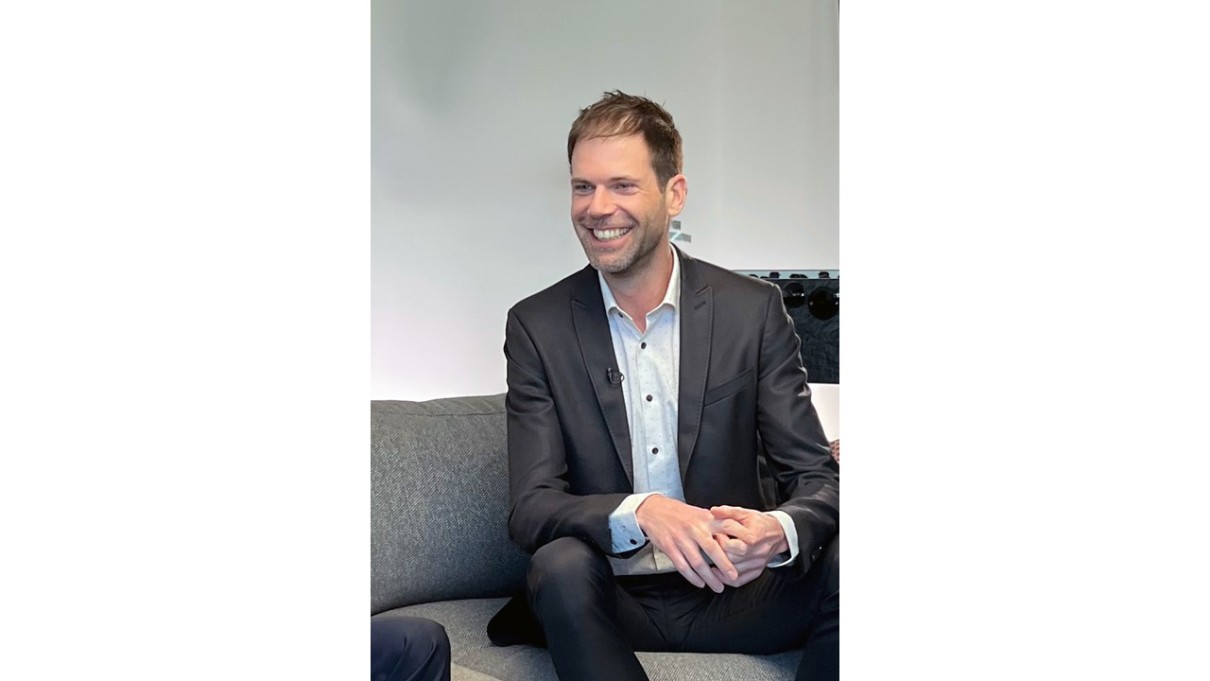Page content
“Our modular concept gives hospitals flexibility“

Daniel Heinze
For Daniel Heine, sales head at the hospital IT specialist NEXUS AG, modern hospital information systems must follow a platform concept and be modularly designed. That applies as much to core functions as it does to a whole range of tools which use AI to make life easier for a range of users.
There are big changes taking place in the German hospital IT market. SAP is discontinuing its IS-H industry software. That directly affects billing, and in many cases indirectly hospital information systems. How can NEXUS provide support here?
We are already actively providing support. As a partner of SAP we have ten years of experience with their solutions, including the switchover to S4/HANA. We have already converted the billing software from IS-H to our own system for 25 existing customers. Since the end of last year alone we have had ten inquiries from companies who want to switch in the next few months. As regards the HIS, Kinikum Landau is the first i.s.h.med hospital we have switched to our NEXUS / HIS. So in that respect, we already have concrete experience from which all future customers will benefit.
What factors ensure the success of such a fundamental switch to a new system?
We focus on a highly standardised project procedure and have designed our own tool set to specifically facilitate the switchover from IS-H. This is something many other companies do not offer. We also provide managed services as part of the standardised project procedure. Our support is tailored to individual requirements. It ranges from comprehensive outsourcing to selectively easing the load on the IT department through the use of applications and/or databases, including user administration. This can be of significant help. In short, we offer a three-pronged approach comprising a standardised project procedure, a highly motivated service team and long years of experience with SAP, which significantly benefits our customers. Our modular platform concept is also a big advantage for HIS installations.
Please describe the platform concept to us.
Where the implementation of HIS projects is concerned, our focus has for some time been on NEXUS / KISNG, our new HIS generation, and we will be demonstrating it comprehensively again at DMEA 2024. Along with all our solutions, this HIS follows an interoperable platform concept. For HIS projects, this does not always mean replacing everything all at once. We can incorporate customers’ wishes and implement important applications separately or carry out the installation first. That is particularly helpful when switching over from IS-H, because quite often there is no exact knowledge of how long IS-H can still be used. However, the benefits of the interoperable platform concept are far greater. The platform makes it possible to define and control hospital processes via a variety of IT systems. We are able to promise much better results.
Can you be more specific?
Of course. Our consistent use of interoperable standards from FHIR to ISiK means we can network workplaces and processes very efficiently and from the ground up. This can speed up the daily routines of doctors and nursing staff by 80 per cent. Take schedule and resource planning for example, where we integrate patients from the very start before they arrive in hospital and we set up a chain of appointments which are automatically rescheduled depending on availability. There is quite a lot of intelligence behind that, which underpins everything from registering through to discharging and/or relocating a patient. Our aim is to achieve the same ease of use for managing a hospital stay as in private, for booking a holiday for example. In order for that to happen the patient, the focus of all this activity, must be integrated into processes.
Do the benefits of the platform concept also extend directly to medical care?
Yes. An example of that is our Advanced Reporting, which we already exhibited at DMEA last year and which we have significantly developed since. Based on structured terminologies such as LOINC and SNOMED, and by integrating device data we are able to highly automate documentation. During an endoscopy for example, structured terminology is used. Both German text and machine-readable code is produced. Specific elements of the report can then be addressed using voice recognition, which saves even more time. Ideally, the report is ready the moment the endoscopy has finished. We have incorporated that in almost all NEXUS solutions. It works with other specialist disciplines, whereby there is not always the same amount of specialist terminology available for use. In those cases we methodically assemble content in collaboration with science, teaching and naturally our customers. It works very well for emergency units, where there are many young colleagues and stress levels are high. It helps enormously if there is a structure to go by.
It all sounds as though hospital IT is becoming more intelligent.
Definitely. We are actively driving this development with a separate AI platform. That was the big surprise at the last DMEA. The AI platform was still in its infancy, but was very well received. We have developed it significantly and are now showing the progress we have made. The platform provides tools which support various groups of professionals in their day-to-day work. There is an application which nursing staff can use in their office to successively dictate finished tasks for several patients. No patient files or screens need be selected. Another tool is an automatic polyp detector that can be coupled with the previously mentioned Advanced Reporting function. As regards IT heads and management level, we provide AI tools which automate certain analyses and let users inquire databases using free text and which create diagrams accordingly. There really is something there for everyone.


